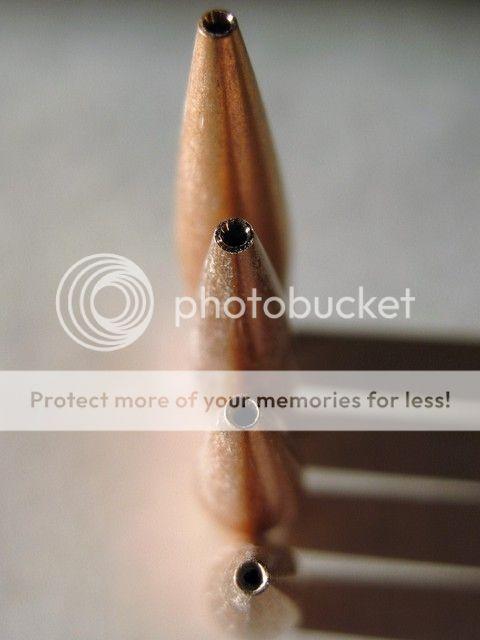earl1704
Well-Known Member
30-06, Nosler case, 52.2 gr. H4350 powder, Berger 185 gr. VLD Hunting Bullet, GM210M primer.
Bull elk 293 yds. first 3 shots gut shot (make the boy scout sign with your hand and the 3 raised fingers are how close the shots impacted the elk). 1 shot unknown impact.
I knew (assumed) the elk was hit because his head kept drooping, we saw no blood and the elk did not flinch just stood there when hit. After waiting about 45 min. approached the elk who had walked about 100 yds. and sat down. Elk stood up and moved at a trot away, took 2 more shots from 50 yds. before he went down for good. Total of 5 shots I know hit the elk. One probably hit but can't confirm.
With the hide removed I found shots stacked as stated above (three fingers) in the ribs on the impact side, on the opposite side a small chip 1/4 inch out of the rib area where one bullet nicked the rib, small blood shot area of about 2 to 3 inches for each exit wound. That is blood, the exit hole had closed up around blood shot area.
All bullets were pass through shots NO EXPANSION.............ran a metal detector over the carcass one copper jacket (39.1 gr.) only found on opposite impact side between the hide and ribs.
No heart lung damage I could find, I assume the last 2 shots went through the heart lung area although I could not find the entrance or exit wound (really thick hair) some blood shot area in the assumed exit side of the front chest after hide was removed. I know this took him down since he fell immediately after 6th shot.
What the heck happened! Anyone with thoughts (other than my bad first 3 shot placement)?
Why no expansion, the shots were like running a pencil through the elk? No internal damage found just entrance and exit areas. Why no expansion need to figure this out..........................Thanks, Earl
Bull elk 293 yds. first 3 shots gut shot (make the boy scout sign with your hand and the 3 raised fingers are how close the shots impacted the elk). 1 shot unknown impact.
I knew (assumed) the elk was hit because his head kept drooping, we saw no blood and the elk did not flinch just stood there when hit. After waiting about 45 min. approached the elk who had walked about 100 yds. and sat down. Elk stood up and moved at a trot away, took 2 more shots from 50 yds. before he went down for good. Total of 5 shots I know hit the elk. One probably hit but can't confirm.
With the hide removed I found shots stacked as stated above (three fingers) in the ribs on the impact side, on the opposite side a small chip 1/4 inch out of the rib area where one bullet nicked the rib, small blood shot area of about 2 to 3 inches for each exit wound. That is blood, the exit hole had closed up around blood shot area.
All bullets were pass through shots NO EXPANSION.............ran a metal detector over the carcass one copper jacket (39.1 gr.) only found on opposite impact side between the hide and ribs.
No heart lung damage I could find, I assume the last 2 shots went through the heart lung area although I could not find the entrance or exit wound (really thick hair) some blood shot area in the assumed exit side of the front chest after hide was removed. I know this took him down since he fell immediately after 6th shot.
What the heck happened! Anyone with thoughts (other than my bad first 3 shot placement)?
Why no expansion, the shots were like running a pencil through the elk? No internal damage found just entrance and exit areas. Why no expansion need to figure this out..........................Thanks, Earl


